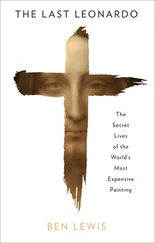Leonardo da Vinci - The Notebooks of Leonardo Da Vinci. Complete
Здесь есть возможность читать онлайн «Leonardo da Vinci - The Notebooks of Leonardo Da Vinci. Complete» — ознакомительный отрывок электронной книги совершенно бесплатно, а после прочтения отрывка купить полную версию. В некоторых случаях можно слушать аудио, скачать через торрент в формате fb2 и присутствует краткое содержание. Жанр: foreign_prose, foreign_home, visual_arts, foreign_antique, на английском языке. Описание произведения, (предисловие) а так же отзывы посетителей доступны на портале библиотеки ЛибКат.
- Название:The Notebooks of Leonardo Da Vinci. Complete
- Автор:
- Жанр:
- Год:неизвестен
- ISBN:нет данных
- Рейтинг книги:3 / 5. Голосов: 1
-
Избранное:Добавить в избранное
- Отзывы:
-
Ваша оценка:
- 60
- 1
- 2
- 3
- 4
- 5
The Notebooks of Leonardo Da Vinci. Complete: краткое содержание, описание и аннотация
Предлагаем к чтению аннотацию, описание, краткое содержание или предисловие (зависит от того, что написал сам автор книги «The Notebooks of Leonardo Da Vinci. Complete»). Если вы не нашли необходимую информацию о книге — напишите в комментариях, мы постараемся отыскать её.
The Notebooks of Leonardo Da Vinci. Complete — читать онлайн ознакомительный отрывок
Ниже представлен текст книги, разбитый по страницам. Система сохранения места последней прочитанной страницы, позволяет с удобством читать онлайн бесплатно книгу «The Notebooks of Leonardo Da Vinci. Complete», без необходимости каждый раз заново искать на чём Вы остановились. Поставьте закладку, и сможете в любой момент перейти на страницу, на которой закончили чтение.
Интервал:
Закладка:
168
Both the primary and derived shadow will be larger when caused by the light of a candle than by diffused light. The difference between the larger and smaller shadows will be in inverse proportion to the larger and smaller lights causing them.
[Footnote: In the diagrams A stands for celo (sky), B for cadela (candle).]
169
ALL BODIES, IN PROPORTION AS THEY ARE NEARER TO, OR FARTHER FROM THE SOURCE OF LIGHT, WILL PRODUCE LONGER OR SHORTER DERIVED SHADOWS.
Among bodies of equal size, that one which is illuminated by the largest light will have the shortest shadow. Experiment confirms this proposition. Thus the body m n is surrounded by a larger amount of light than the body p q , as is shown above. Let us say that v c a b d x is the sky, the source of light, and that s t is a window by which the luminous rays enter, and so m n and p q are bodies in light and shade as exposed to this light; m n will have a small derived shadow, because its original shadow will be small; and the derivative light will be large, again, because the original light c d will be large and p q will have more derived shadow because its original shadow will be larger, and its derived light will be smaller than that of the body m n because that portion of the hemisphere a b which illuminates it is smaller than the hemisphere c d which illuminates the body m n .
[Footnote: The diagram, given on Pl. IV, No. 2, stands in the original between lines 2 and 7, while the text of lines 3 to 6 is written on its left side. In the reproduction of this diagram the letter v at the outer right-hand end has been omitted.]
170
The shadow m bears the same proportion to the shadow n as the line b c to the line f c .
171
OF PAINTING.
Of different shadows of equal strength that which is nearest the eye will seem the least strong.
Why is the shadow e a b in the first grade of strength, b c in the second; c d in the third? The reason is that as from e a b the sky is nowhere visible, it gets no light whatever from the sky, and so has no direct [primary] light. b c faces the portion of the sky f g and is illuminated by it. c d faces the sky at h k . c d , being exposed to a larger extent of sky than b c , it is reasonable that it should be more lighted. And thus, up to a certain distance, the wall a d will grow lighter for the reasons here given, until the darkness of the room overpowers the light from the window.
172
When the light of the atmosphere is restricted [by an opening] and illuminates bodies which cast shadows, these bodies being equally distant from the centre of the window, that which is most obliquely placed will cast the largest shadow beyond it.
173
These bodies standing apart in a room lighted by a single window will have derivative shadows more or less short according as they are more or less opposite to the window. Among the shadows cast by bodies of equal mass but at unequal distances from the opening by which they are illuminated, that shadow will be the longest of the body which is least in the light. And in proportion as one body is better illuminated than another its shadow will be shorter than another. The proportion n m and e v k bear to r t and v x corresponds with that of the shadow x to 4 and y .
The reason why those bodies which are placed most in front of the middle of the window throw shorter shadows than those obliquely situated is:—That the window appears in its proper form and to the obliquely placed ones it appears foreshortened; to those in the middle, the window shows its full size, to the oblique ones it appears smaller; the one in the middle faces the whole hemisphere that is e f and those on the side have only a strip; that is q r faces a b ; and m n faces c d ; the body in the middle having a larger quantity of light than those at the sides is lighted from a point much below its centre, and thus the shadow is shorter. And the pyramid g 4 goes into l y exactly as often as a b goes into e f . The axis of every derivative shadow passes through 6 1/2 [Footnote 31: passa per 6 1/2 (passes through 6 1/2). The meaning of these words is probably this: Each of the three axes of the derived shadow intersects the centre ( mezzo ) of the primary shadow ( ombra originale ) and, by prolongation upwards crosses six lines.
This is self evident only in the middle diagram; but it is equally true of the side figures if we conceive of the lines 4 f , x n v m , y l k v , and 4 e , as prolonged beyond the semicircle of the horizon.] and is in a straight line with the centre of the primary shadow, with the centre of the body casting it and of the derivative light and with the centre of the window and, finally, with the centre of that portion of the source of light which is the celestial hemisphere, y h is the centre of the derived shade, l h of the primary shadow, l of the body throwing it, l k of the derived light, v is the centre of the window, e is the final centre of the original light afforded by that portion of the hemisphere of the sky which illuminates the solid body.
[Footnote: Compare the diagram on Pl. IV, No. 3. In the original this drawing is placed between lines 3 and 22; the rest, from line 4 to line 21, is written on the left hand margin.]
174
THE FARTHER THE DERIVED SHADOW IS PROLONGED THE LIGHTER IT BECOMES.
You will find that the proportion of the diameter of the derived shadow to that of the primary shadow will be the same as that between the darkness of the primary shadow and that of the derived shadow.
[Footnote 6: Compare No. 177.] Let a b be the diameter of the primary shadow and c d that of the derived shadow, I say that a b going, as you see, three times into d c , the shadow d c will be three times as light as the shadow a b . [Footnote 8: Compare No. 177.]
If the size of the illuminating body is larger than that of the illuminated body an intersection of shadow will occur, beyond which the shadows will run off in two opposite directions as if they were caused by two separate lights.
On the relative intensity of derived shadows (175-179).
175
ON PAINTING.
The derived shadow is stronger in proportion as it is nearer to its place of origin.
176
HOW SHADOWS FADE AWAY AT LONG DISTANCES.
Shadows fade and are lost at long distances because the larger quantity of illuminated air which lies between the eye and the object seen tints the shadow with its own colour.
177
a b will be darker than c d in proportion as c d is broader than a b .
[Footnote: In the original MS. the word lume (light) is written at the apex of the pyramid.]
178
It can be proved why the shadow o p c h is darker in proportion as it is nearer to the line p h and is lighter in proportion as it is nearer to the line o c . Let the light a b , be a window, and let the dark wall in which this window is, be b s , that is, one of the sides of the wall.
Читать дальшеИнтервал:
Закладка:
Похожие книги на «The Notebooks of Leonardo Da Vinci. Complete»
Представляем Вашему вниманию похожие книги на «The Notebooks of Leonardo Da Vinci. Complete» списком для выбора. Мы отобрали схожую по названию и смыслу литературу в надежде предоставить читателям больше вариантов отыскать новые, интересные, ещё непрочитанные произведения.
Обсуждение, отзывы о книге «The Notebooks of Leonardo Da Vinci. Complete» и просто собственные мнения читателей. Оставьте ваши комментарии, напишите, что Вы думаете о произведении, его смысле или главных героях. Укажите что конкретно понравилось, а что нет, и почему Вы так считаете.












